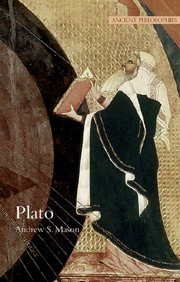9 - Aesthetics
Summary
One of the most striking features of Plato's thought is his attitude to the arts, especially poetry, revealed in the severe restrictions he places on them in his account of the ideal state. It is sometimes thought that he banished poetry completely from that state, and indeed some of his own language suggests that, although in fact he allows a place for hymns to the gods and odes in praise of good people (Resp. 607a). But it does seem that he condemns almost all of the poetry that existed in his time, and in particular that of Homer and the tragedians, often seen as the supreme achievements of ancient Greek literature. Moreover, while the main focus of his criticism is poetry, he does also propose restrictions on music (398c ff.), and on visual art, including the design of buildings, furniture, clothing and so on (401a ff.). In this chapter, we shall look at Plato's thought about the arts so as to see his reasons for restricting them in this way.
The term “aesthetics” is in some ways anachronistic in the discussion of Plato. For us, it includes both the philosophical consideration of the arts, and that of beauty and related properties and our experience of them. While, as we shall see, Plato did think that beauty can be manifested in the products of art, he would not have seen the topics as particularly closely connected.
- Type
- Chapter
- Information
- Plato , pp. 181 - 200Publisher: Acumen PublishingPrint publication year: 2010



